The sun was setting on the Norwegian port of Bergen. It was early July, 1349, and off in the distance, a lone ship was crossing the line of the horizon. The ship bobbed calmly, port to starboard, coming closer into view. The inhabitants of Bergen noticed its tattered sails and lack of movement on board. As gently as it had appeared, the ship entered the harbour and run aground. Every sailor on board was dead.
The people of Bergen were fully aware of the events unfolding across the rest of Europe over the previous two years: a mysterious, malevolent, life-consuming force had spread death and decay all over the continent. Until that day, Bergen had been spared.
Norse mythology used to tell stories of Naglfar, a ship made entirely of the nails and toenails of the dead. Naglfar would appear at the onset of Ragnarok, the twilight of the Gods and the end of times. The ship of the dead would ferry the forces of chaos to bring destruction upon the realms of the Gods, and of humankind.
Like Naglfar, the ghost ship of Bergen had appeared from nowhere, carrying on board an agent of dissolution and chaos, the scourge of humanity. The Black Death.
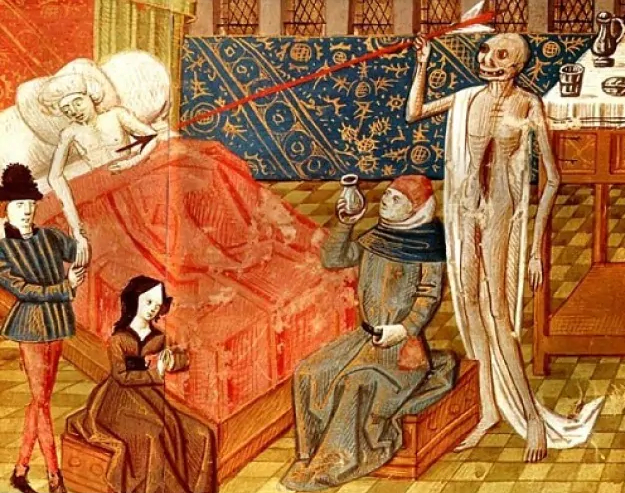
Revelation 6:8
“And I looked, and there was a pale green horse. Its rider was named Death, and Hades was following after him. They were given authority over a fourth of the earth, to kill by the sword, by famine, by plague, and by the wild animals of the earth.”
How can we define the Black Death today? We could say it was the most successful human conqueror in the history of mankind, if success is measured by how many trees are cut down to feed the funeral pyres.
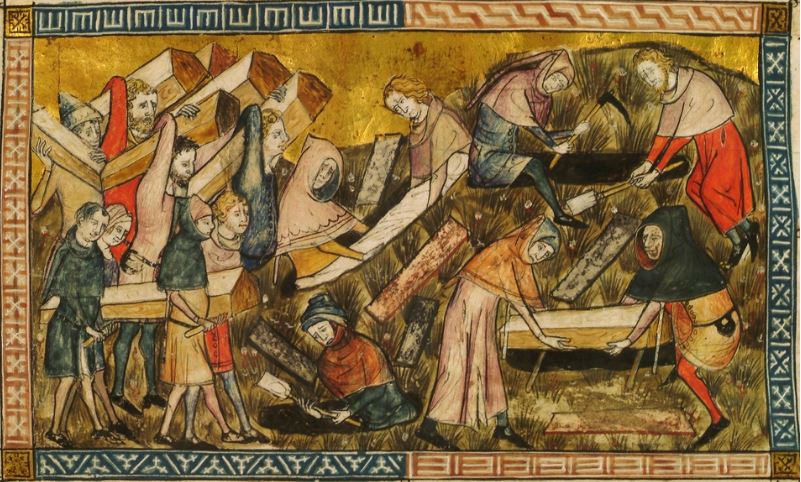
We could say it was the greatest strategist, if greatness is measured by how little soil remains to bury the dead.
What we eventually defined as ‘the Black Death’ was a mid-14th century pandemic of bubonic plague that came knocking at the gates of Asia, Europe, and Africa, rapping with the soft paws of a sickly rat, a guest uninvited with cruel intent. But if you look at the way the Black Death spread, attacked, and preyed on humans; if you consider the effectiveness with which it encircled and annihilated entire Nations … well, you’d be forgiven for thinking that an even more sinister, unnatural power was at play, hell-bent on bringing about the end of times.
But this wasn’t the first time that humanity had withstood an invasion by this malevolent angel: it had spread its wings back in the 6th Century, known then as the Justinian Plague. But too much time had passed; too many memories had been lost. When the pandemic returned, humankind was completely unprepared.
The Black Death had laid dormant for eight centuries, trapped in a purgatory of meagre rodent prey. Almost like a lifeless object, it awaited its time of reprisal against its human enemy. We could not tell why it hated us, but we did find out how much it could hate us.
Black Death: Origins
It is still unclear where the Black Death first came from. Possibly China, or maybe in the steppe region, where a plague reservoir stretches from the north-western shores of the Caspian Sea into southern Russia.
A plague reservoir looks like a vast area of wilderness, almost entirely devoid of human life. It may have been there, amongst a population of marmots, rats, and other rodents, that it first appeared, invisible to the naked eye. The unaware mammals all carried the minions of Black Death, a bacterium which later generations would classify as Yersinia Pestis. This is the pathogen at the root of both the bubonic and pneumonic plagues, and it was believed to have been endemic to Central Asia.
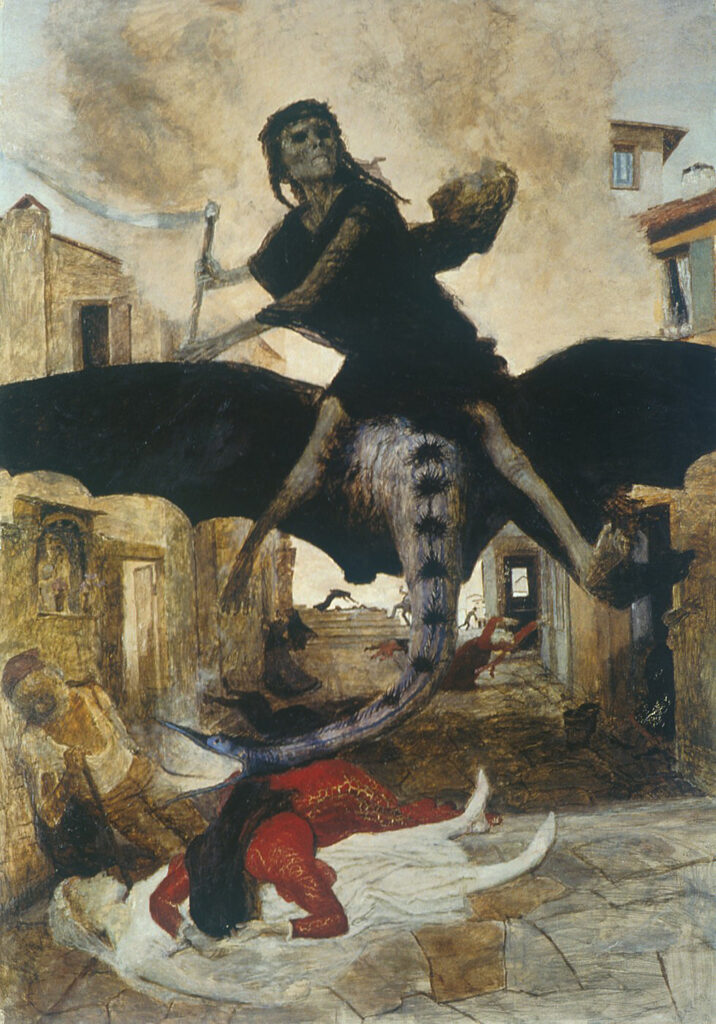
We don’t know the exact time in which the disease started to spread from rodents to humans, but we know of an early outbreak in 1331, which erupted in China during the rule of the Yuan dynasty. This dynasty had been founded by Kublai Khan, the grandson of Genghis Khan. The Mongols had been an irresistible force for more than a century, but they had finally met their match. Three years later, the Black Death had killed more than 90 percent of the population of Hebei province, near the Capital of Dadu, or modern-day Beijing. The death toll surpassed 5 million people.
These were the effects of the conquering disease in just one province. As of 1200, China had a total population of more than 120 million, but a census in 1393 found only 65 million Chinese accounted for. Almost half of the population of a great Empire lay dead. As the Yuan Dynasty was replaced by the Mings, many hundreds of thousand, even millions, died in battle or starved. But many, many more millions had fallen prey to the Black Death.
After the first outbreaks, the rats and their fleas, ridden with Yersinia Pestis, started their journey westward, as stowaways to the caravans travelling along the Silk Road. At the end of a long day’s travel, the merchants would stop at the numerous caravansaries – or resting places – dotting the Silk Road. These made perfect occasions for the possessed fleas to infect rats, animals, and other travellers. Caravans upon caravans, criss-crossing the plains of central Asia, unwittingly obeyed the bidding of the Black Death, spreading the plague across all of Asia and the Middle East.
By 1335 the Black Death had infected Persia. During that year, the local Mongol ruler Abu Said died of bubonic plague. An estimated one third of all Persians died in the ensuing epidemic, an event that marked the beginning of the end of Mongol rule in the region.
More Central Asian cities and communities fell one by one under the shadow of the Angel of death: Talas, Samarkand, even Sarai- this was the capital of another Mongol state, the Khanate of the Golden Horde. It is as though the Black Death had a personal grudge against the Mongols. Maybe it simply exploited their legendary mobility to reach the four corners of the World, exacting a toll after each passage.
The plague did not discriminate amongst its victims. Any King, Queen, or Khan could become easy prey.
Out of the Land of Darkness
After every sweep of the plague, each population center would have lost at least 40 percent of its citizens. Sometimes, the death tolls climbed as high as 70 percent.
Understandably, the inhabitants of stricken cities fled in panic, but this only contributed to further outbreaks of the disease. Soon, the Black Death had reached the Middle East,, where some scholars had already taken notice of the catastrophe that had nearly obliterated Asia.
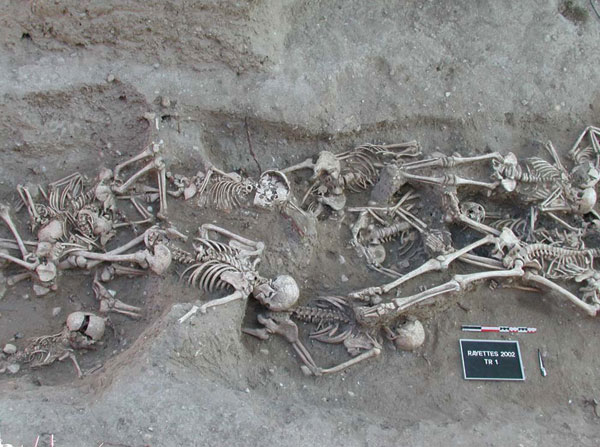
Ibn al-Wardi, a Syrian writer, and later a victim of the plague, recorded that the Black Death “came out of The Land of Darkness.” which may implicate Central Asia – or possibly a much darker and more remote land beyond this Earth.
The Egyptian scholar Al-Mazriqi noted all of Asia was depopulated, as far as the Korean Peninsula. His own country was no luckier: Cairo, by then the most populous city in Africa, lost 52% of its inhabitants. Almost 14,000 died in just two days. The corpses were so many that in a rare occurrence, religious authorities waived the required prayers for the dead: there were simply too many.
Ibn Battuta, the great traveler and chronicler of the 14th Century, had noted in his Travel memoir that as of 1345, “the number that died daily in Damascus had been two thousand”
Battuta also wrote that the survivors had been able to defeat the plague through prayer. But Muslim religious practices may have played in the Black Death’s favor. The Hajj, the annual pilgrimage to Mecca, provided a great route for Yersinia Pestis to seek new hosts. By 1349, the holy city of Mecca had been struck by the plague.
The Moroccan historian Khaldun left behind an account of the Apocalyptic wasteland:
“Civilization both in the East and the West was visited by a destructive plague which devastated nations and caused populations to vanish … Cities and buildings were laid waste, roads and way signs were obliterated, settlements and mansions became empty, dynasties and tribes grew weak. The entire inhabited world changed.”
Until recently, we (the descendants of the survivors), assumed that the Sahara Desert had stopped the outbreak, that the Black Death had spared sub-Saharan Africa. Medieval written records for that region never mention the plague, and the area lacks the most macabre memento of the pandemic: the ‘plague pits’ or mass graves.
It is not entirely clear how, but the thralls of Black Death, the Yersinia, thanks to the fleas and the rodents … somehow crossed the inhospitable expanse of sand and infected communities on both coasts of the continent.
Archaeologists have found evidence of societal collapse and abandonment of towns in sites such as Akrokrowa, in Ghana or Ife, Nigeria. Other cities and settlements in East Africa were also abandoned during the mid-14th Century, from the coast of the Red Sea, down to Tanzania and even Madagascar. Proof is scarce, as geneticists were not able to secure DNA from African victims of that period … and yet the patterns of sudden collapse and de-population are too suspicious. The Black Death was definitely bent on total World domination.
Asia had fallen. The conquest of the Middle East and Africa raged on. The next target was Europe.
Waves of Yersinia Pestis could have infected the Russian principalities at a very early stage of the campaign for Asia. But the plans of the Black Death had been momentarily thwarted by its early foes, and victims: the Mongols.
The Mongol state in Central Asia, the Khanate of the Golden Horde, had converted to Islam, and the trade with Christians was no longer tolerated. As a result, the caravan routes from Asia to Europe had been cut off, meaning that contagion of the plague stopped abruptly on the Mongol border with the Russian principalities.
But as I said, the Black Death was a cunning strategist and would find its way to Europe, one way or another.
Twenty-three Days
Before I move on to the conquest of Europe, allow me to take a look at the effects of the plague on an individual.
Yersinia Pestis initially likes to infect rats and other rodents. It takes from ten to fourteen days for plague bacteria to exterminate a contaminated rat colony. For the following three days, the fleas infesting these rats will lay in wait, fasting, until new prey walks nearby. This prey can be another rat, but a hungry flea will not think twice before attacking a human.
After an infected flea bites a human host, Yersinia Pestis will invade his or her bloodstream. One of the first symptoms of contagion is the swelling of a lymph node, most often in the groin, thigh, armpit, or neck. The lymph node will grow in size, taking the appearance of a swollen, blackened and painful bubo. Which gives its name to the bubonic plague.
For three days, the infected individual may feel fine, while the disease incubates. Then, early symptoms will appear, growing in severity very quickly: fever, headache, chills, widespread weakness.
After that, it’s only a matter of a three more days. Then, in more than 80% of cases, the infected individual will die.
It takes 14 days for Yersinia to exterminate a rat colony. Another three days before infected fleas contaminate the first human. Six days later, the first human dies. That makes a 23-day period from the introduction of plague amongst rats to the first human death in a given community. A strange number, 23. Try and divide 2 by 3 and what do you get? Zero point 666.
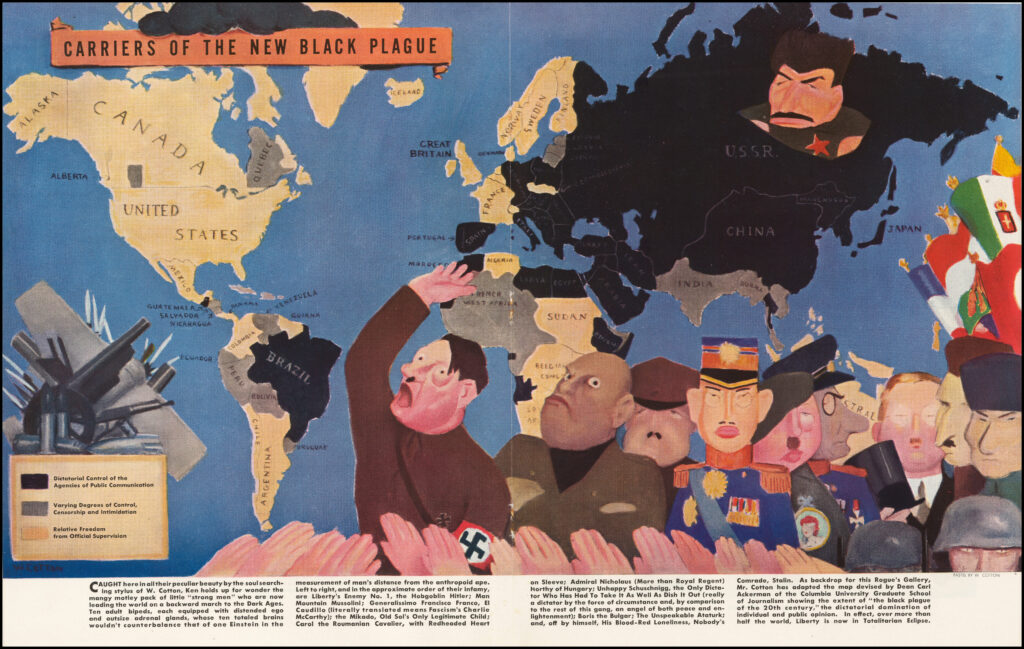
And whose number is 666? Of course, I am sure there is no relation, I am just teasing …
But the speed and perversion with which the Black Death killed, well, it did have a demonic quality. In some cases, plague bacteria became concentrated in the lungs and caused symptoms similar to pneumonia. This was pneumonic plague, and its course was even more violent than the bubonic version. People ill with pneumonic plague could die as early as after two hours of catching the disease. What’s worse, pneumonic plague sufferers can easily infect healthy individuals, as they are beset with violent, bloody fits of coughing. The droplets they expel can easily infiltrate other people’s airways, resuming the cycle of contagion.
Surprisingly, however, the vast majority of Black Death victims were not caused by human-on-human contagion. Infections were almost exclusively due to bites from fleas that had previously sucked blood off a rat. The tiny parasites could attack directly after feasting on rat’s blood, or sometimes they travelled unnoticed aboard another animal or human host.
The Black Death had to rely heavily on rats for its invasion plans, and this had an effect on both the geographic spread of the invasion as well as its timeline. Rats thrived on ships, especially merchant ships, which at that time were able to travel 40 kilometers, or 25 miles, every day.
This is why the Black Death in Europe appeared to conquer in leaps and bounds, rather than following a linear path as it was in Asia. Rat fleas are parasites that are most active in the warmer seasons, which explains why the springs and summers of the mid-14th Century became unusually lethal. ‘Winter is coming’ … must have sounded like a promise back then, as the plague lost most of its contagion power in colder months.
Doctors at that time could do little to fight the Black Death. The most common form of treatment was ‘lancing’, or piercing, the buboes, which expelled a reeking black liquid. Other methods involved leeching or bleeding the ill, or washing their bodies with vinegar.
A much later book, Edward IV’s Plague Medicines of 1480, reports a medicine commonly used:
“Take an egg that is newly laid, and make a hole in either end, and blow out all that is within. And lay it to the fire and let it roast till it may be ground to powder, but do not burn it. Then take a quantity of good treacle, and mix it with chives and good ale. And then make the sick drink it for three evenings and three mornings.”
Certainly futile, but at least the ale was good.
Europe shall fall
In 1344, the Golden Horde decided to lay siege to the port city of Kaffa, on the Crimean peninsula. Since the late 1200s, Kaffa had been under the rule of Genoa, one of the Four Italian Sea Republics. The Genoese resisted the Mongols for three years, but in 1347, reinforcements from the Golden Horde arrived, and they brought with them something undesired: the plague.
An Italian lawyer, Gabriele De Mussis, described the last stages of the siege:
“The whole army was affected by a disease which overran the Mongols and killed thousands upon thousands every day. The Mongol leader ordered corpses to be placed in catapults and lobbed into the city in hopes that the intolerable stench would kill everyone inside.”

Catapulting your own dead soldiers inside the city walls… that’s a tactic that would certainly please General Black Death. But Gabriele’s is the only account of such an event, so it may have been an exaggeration. Nonetheless, the infection soon spread within the city walls. And from there, pushed out by the double threat of the Mongols and the plague, the Genoese merchants escaped by ship.
The war waged by the Black Death in Asia had been on land, relying on caravans and the fast Mongol cavalry. The invasion of Europe would be a more nautical one.
In October of 1347 one of the Genoese ships landed in the Sicilian port of Messina. It was clear to the port officials that something was wrong: most of the crew were dead, and the rest spoke about a mysterious disease that had ravaged them. The survivors were prevented from leaving the ships and, after a few days they were all dead.
A contemporary account reads:
“The sailors brought in their bones a disease so violent that whoever spoke a word to them was infected and could in no way save himself from death… There then appeared, on a thigh or an arm, a pustule like a lentil. From this the infection penetrated the body and violent bloody vomiting began. It lasted for a period of three days and there was no way of preventing its ending in death.”
So, ‘whoever spoke a word’ to the sick was infected. No one had thought about the rats. Loyal to their black Master, they had scurried over the ropes connecting the ship to the docks. These tightrope walkers were the executioners of Europe.
The outbreak at Messina is often cited as the first landing of the Black Death in Europe. But the Genoese sailors from Kaffa made several other stops, both before and after Messina, every time spreading the plague in so-called ‘metastatic leaps.’
Black Death had arrived in Constantinople in May 1347, where it had launched from the Adriatic coast. It reached Marseilles in September. Throughout Autumn, the Genoese, or those who had been infected by them, landed in all major trading hubs of the Mediterranean: Dubrovnik, Venice, Pisa, Genoa, Valencia.
All these ports were the bridgeheads for the invasion force, which then broke through to the mainland. More merchant ships fell to the Black Death, resulting in more metastatic leaps.
By March 1348, Southern France, Northern Spain and almost all of Italy were living under the shadow of the Conqueror. The wealthy city-state of Florence had been struck harder than other Italian towns. It is estimated that 70% of its citizens died within the few early months of the plague. The outbreak inspired seminal author Boccaccio to write his ‘Decameron’. This is how he describes the massacre:
“It first betrayed itself by the emergence of certain tumours in the groin or the armpits, some of which grew as large as a common apple, others as an egg… Many died daily or nightly in the public streets. Of many others, who died at home, the departure was hardly observed by their neighbors, until the stench of the bodies carried the news.”
The Black Death then crept northward. From the French Mediterranean bridgeheads, the hordes of Yersinia-infected rats moved inland and reached the Atlantic ports. It was a ship from Bordeaux that took the plague to England: the first town to be infected was Melcombe Regis, where the epidemic broke out shortly before June 24th.
London fell in August 1348. By January 1349, the population was so depleted, especially of clergymen, that the Bishop of Bath wrote this to his diocese:
“The plague… has left many parish churches… without parson or priest to care for their parishioners… Therefore, if parishioners are on the point of death and cannot secure the services of a priest, then they should make confession to each other… if no man is present, then even to a woman.”
The whole Kingdom had been contaminated by the end of 1349.
Further North, Norway was the first Scandinavian country to be invaded. Oslo fell first, in the autumn of 1348. The outbreak in Oslo was mercifully stopped by the advent of winter weather, but it broke out again in the early spring. The following year, the Black Death completed its pincer movement against Norway, with a second landing: the Ghost Ship at Bergen, plague’s own Naglfar, was a ship of wool merchants from the English port of King’s Lynn.
Taking Oslo was a strategic masterstroke for the Black Death. The city was a major trading hub for the Hanseatic fleet, a League of rich and powerful merchant towns stretching from the North Sea to the Baltic. Needless to say, their merchants sailing off Oslo disseminated a cargo they could not fathom to new destinations – Denmark, Sweden, and Northern Germany soon fell. The new front opened in the spring of 1350 and moved southward, crushing the populace with the same plague invasion that had entered Southern Germany from Austria.
Now that Black Death had spread to almost all of Europe, it plotted its next move. This was one that would spell disaster for many conquerors in later centuries: invading Russia. It had already tried, entering from the East, but the Golden Horde had stopped the caravans along the Silk Road. Now, nobody would stop the scourge of Nations.
The plague entered the principality of Novgorod in the late autumn of 1351, but the onset of the cold stopped the outbreak. But is was only temporarily: the progress of the disease resumed in the spring of 1352, reaching Moscow the following year. The Black Death reached the border with the Golden Horde, this time from the west, bringing its Odyssey full circle.
In the same year, the pandemic petered out. Iceland and Finland were the only countries that had evaded the Apocalypse; the rest of the continent was on its knees.
After the End
The death toll is still debated. According to conservative estimates, the Black Death had swept away 20 to 30 percent of Europe’s population. Recent calculations place the number much higher, near 60 percent. That’s 50 million men, women, and children who lost their lives because of the bite of the tiniest and humblest parasite one could imagine. Humanity simply did not have the tools to combat this invisible foe. Doctors did not have a cure, and even preventative measures were insufficient. Germ theory was still centuries away, but authorities did understand that the proximity of contaminated individuals would spread the disease. Several cities implemented quarantines, preventing travelers from entering within their walls. What they could never realistically hope to contain was rats and fleas, creeping in from everywhere undetected.
What did stop the Black Death, then? It was a combination of two elements. First, the onset of longer, colder winters that killed off plague-carrying fleas. Second, the disease itself was too effective to be efficient. The plague killed off its victims too quickly, rats and humans alike. This prevented them from travelling further afield, carrying the bacteria to more and more hosts.
The Europe that slowly recovered after the year 1353 was a transformed continent. Surprisingly, some of the societal changes were for the better. The poorer sections of the population enjoyed a better diet, better working conditions and a longer life expectancy. This was a consequence of the reduction in workforce: it prompted feudal lords to increase their labourers’ wages and to find innovative ways to increase the productivity of their lands.
The epidemic also had an impact on the spread of culture and education. As travel to traditional University cities became dangerous, new scholarship centres were founded, allowing for the multiplication and diversification of academia.
The Black Death may have eventually died out, but its carriers, the Yersinia Pestis bacteria, evolved into a different strain. A strain more selective , yet equally malicious: one that would be able to pick its victims based on their age. This became the second wave in 1361, one that would target specifically the younger rungs of society, the most innocent and vulnerable: this would become known as ‘The Second Pestilence’, or ‘The Plague of Children’. But this is a story for another day.



